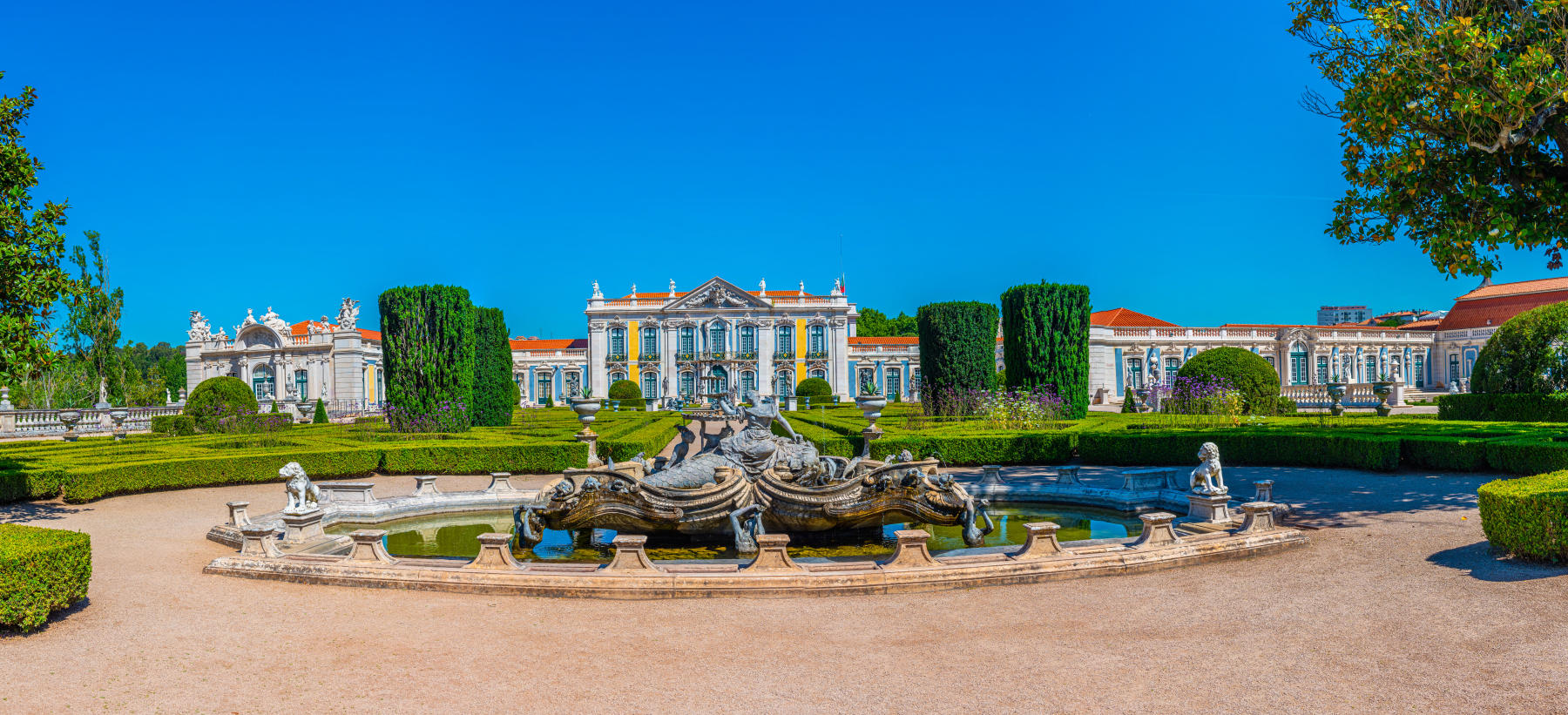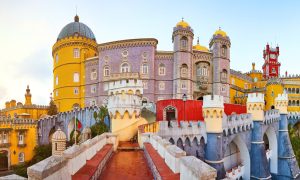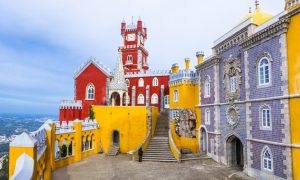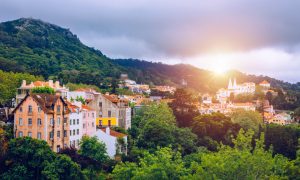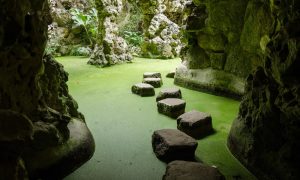Tucked away between Lisbon and Sintra, the Queluz National Palace offers a splendid dive into the golden age of Portuguese royalty. With its intricate Baroque, Rococo, and Neoclassical design, this palace is a dazzling example of 18th-century opulence, echoing the grandeur of Versailles but on a more intimate, Portuguese scale. Whether you’re a lover of history, architecture, or just beautiful gardens, Queluz offers a captivating journey through time.
A Brief History of Queluz National Palace
Construction of the Queluz National Palace began in 1747, initially as a summer retreat for Dom Pedro of Braganza, the future King Consort of Portugal. However, as the years progressed, it transformed into the royal family’s primary residence, especially after Lisbon’s devastating 1755 earthquake. It soon became a stage for lavish balls, concerts, and celebrations.
Perhaps one of the most intriguing historical chapters occurred when the palace was home to Dom João VI and his family during the turbulent Napoleonic invasions. After the Portuguese royal court fled to Brazil in 1807, Queluz continued to play a vital role, later becoming the place where Queen Maria I spent her final years, famously dubbed “Maria the Mad” due to her mental health struggles. The palace’s stories are imbued with the rise and fall of kings, queens, and courtly intrigues.
Key Highlights and Must-Sees
1. The Throne Room
The Sala do Trono is arguably one of the most impressive rooms in the palace. Gilded mirrors, stunning chandeliers, and exquisitely detailed stuccos line this grand chamber where royal ceremonies once unfolded. The deep red velvet and gold accents bring a sense of regal splendor that lingers in the air.
2. The Robillon Staircase
Designed by French architect Jean-Baptiste Robillon, this elegant staircase is a masterpiece of Rococo architecture. Its flowing, whimsical design, adorned with ornate iron railings and marble, draws your eyes upward to a stunning fresco ceiling.
3. The Music Room
Sala da Música is a must-visit for its delicate acoustics and grandiose design, where the royal family would enjoy private concerts. The walls are adorned with rich tapestries, and a sense of artistic splendor fills the space.
4. The Gardens of Queluz
A palace is only as magnificent as its gardens, and Queluz does not disappoint. The Formal Gardens are a labyrinth of neatly trimmed hedges, tranquil ponds, and statues of mythological figures. The Canal dos Azulejos—a tiled canal—is one of the most unique features, with stunning Portuguese blue-and-white tiles depicting scenes from daily life.
At the heart of the gardens stands the Neptune Fountain, a striking Baroque marvel. The fountain’s dramatic sculpture of Neptune, with water cascading around him, exudes an air of timeless grandeur. Strolling through these gardens feels like walking through an 18th-century painting.
5. Dona Maria Pavilion
This elegant pavilion, adjacent to the gardens, was a retreat for the royal family. It now houses a collection of royal artifacts and offers a quieter, more intimate look at the life of Portuguese royalty. The pavilion’s design is particularly striking, blending Neoclassical and Rococo styles harmoniously.
Interesting Facts about Queluz National Palace
- The palace is often compared to the Versailles of Portugal due to its similar style, though Queluz carries a more personal, less imposing charm.
- Dom Pedro I of Brazil, who became one of the key figures in the Brazilian independence movement, was born in this palace.
- Queluz served as a prison for Queen Maria I during her period of mental illness, where she lived out her final days.
- The palace has undergone several restoration projects, most recently after a fire in 1934, which significantly damaged parts of the structure.
Visitor Experience
Visiting Queluz offers not only a chance to explore the grandeur of Portugal’s past but also an escape from the modern bustle of nearby Lisbon. The palace itself is a treasure trove of art, history, and architecture, while the gardens provide a peaceful sanctuary of beauty and design.
Upon entering, the palace’s intricate facades and rooms immediately draw you in. Take a leisurely stroll through the grounds, sit by the canal, or marvel at the ornate statues. Whether you visit on a quiet weekday or during one of the palace’s special events, the atmosphere always feels reverent, making you reflect on centuries of Portuguese heritage.
Practical Information: Admissions and Tips
Opening Hours:
- Palace and Gardens: Open daily from 9:00 AM to 6:00 PM (last entry at 5:00 PM).
- Dona Maria Pavilion: Open from 9:00 AM to 1:00 PM and from 2:00 PM to 6:00 PM.
Ticket Prices:
- Adults: €10 (palace and gardens combined)
- Children (6-17 years): €8.50
- Seniors (65+ years): €8.50
- Family ticket (2 adults + 2 children): €33
- Gardens only: €5
Getting There: Queluz National Palace is about a 15-minute drive from central Lisbon or Sintra. Alternatively, take the Sintra Line train from Rossio Station in Lisbon to Queluz-Belas Station—the palace is about a 15-minute walk from there.
Visitor Tips:
- Plan to spend at least two hours exploring the palace and gardens.
- For a more tranquil visit, go early in the morning or later in the afternoon.
- Bring a camera! The Neptune Fountain and the Robillon Staircase are Instagram-worthy.
- Don’t miss the Royal Riding School nearby, which often hosts equestrian performances.
Conclusion
The Queluz National Palace is a gem that offers an immersive look into the lavish world of Portugal’s royal history. From its resplendent throne rooms to its enchanting gardens, this palace is a must-visit for anyone with a passion for history, architecture, or the beauty of classical design. As you walk through its corridors, you’ll be transported to a time when Portugal’s royals reigned supreme—yet its peaceful atmosphere ensures that Queluz remains an oasis of quiet majesty, waiting to be discovered.

